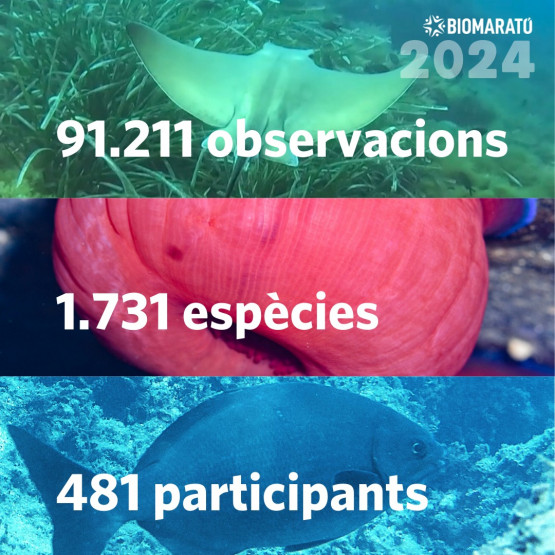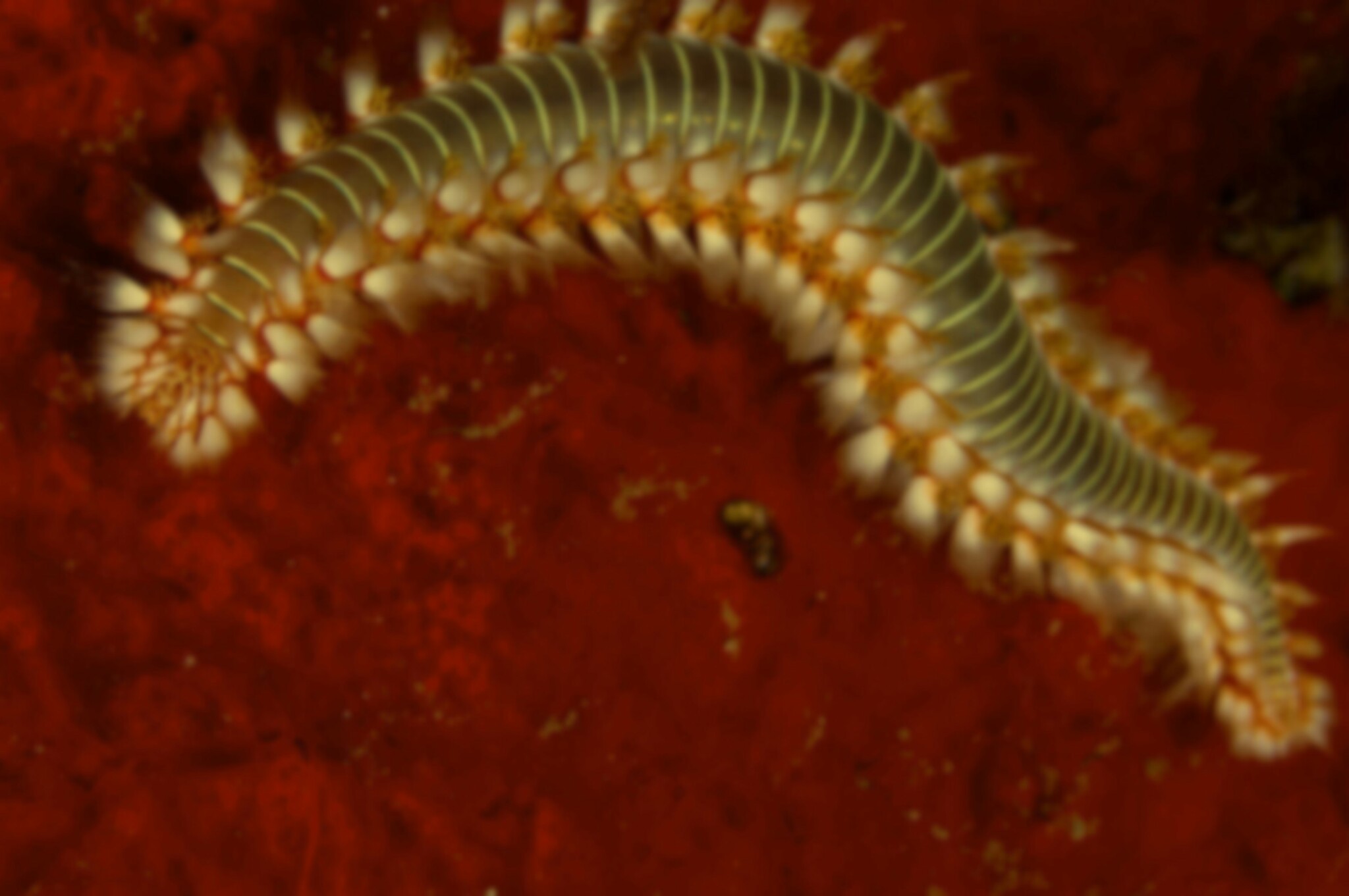
First-time detection of bearded fireworm and parrotfish on Catalonia’s coast, tropical species marking climate change
The BioMARató, a citizen science event led by ANERIS’s coordinator, Institut de Ciències del Mar (ICM-CSIC), has confirmed, for the first time, the presence of two tropical species on the Catalan coast:
the parrotfish(Sparisoma cretense)

and the bearded fireworm (Hermodice carunculata).

Both species, typically found in warmer waters, are regarded as indicators of climate change due to their northward migration, adapting to the Mediterranean’s changing conditions.
The BioMARató, which counted with ANERIS partner FECDAS to train and engage the volunteer community, mobilised 480 participants and generated a record-breaking 91,211 biodiversity observations over six months along the Catalan coastline. Key findings also include signs of ecosystem shifts, such as early ovulation of red gorgonian coral and premature flowering of Posidonia oceanica.
Supported by ANERIS and the other European projects GUARDEN, ECS and MINKE, the BioMARató promotes large-scale marine observation and demonstrates how citizen science can document biodiversity shifts related to climate change.
Warming Mediterranean Seas Bring Tropical Species North
The BioMARató has played a crucial role in discovering these tropical species. The Atlantic parrotfish, commonly found in the Canary Islands, was recorded off the North of Catalonia, on the coast of Blanes. At the same time, the fireworm was observed in the South, in Tarragona’s SES Submarine Park. Both sightings were reported by dedicated citizen scientists participating in the BioMARató and verified by experts through the MINKA platform.
Additional observations include the invasive Asian algae Rugulopteryx okamurae in the Northern Alt Empordà region. This species poses potential risks to local ecosystems and has been invasive in regions like Andalusia and the Strait of Gibraltar.
Changes in Mediterranean Marine Ecosystems
The ICM-CSIC has also noted early biological events among typical Mediterranean species. For example, the ovulation period of violescent sea-whip (Paramuricea clavata) has shifted earlier, and the flowering of Posidonia oceanica, a vital Mediterranean seagrass, started unusually early this year. “These shifts illustrate the broader impacts of global warming on Mediterranean marine ecosystems,” says Dr Jaume Piera, ICM-CSIC researcher, ANERIS and BioMARató coordinator.
The warmer waters have also been linked to unusually high sightings of the pelagic stingray (Pteroplatytrygon violacea), particularly along Barcelona’s coast. Previously found offshore, this species now favours coastal waters for breeding due to rising sea temperatures.
Scientific Insights Through Citizen Collaboration
The BioMARató encourages participants to upload their biodiversity observations to MINKA, making it a vital tool for tracking climate-driven changes. This event has documented rare sightings, including the Bluish club-shaped ascidian(Rhopalaea neapolitana) and a juvenile basking shark (Cetorhinus maximus) off Ametlla de Mar. “These citizen-reported events enrich our scientific understanding of marine biodiversity shifts in response to warming seas,” adds Dr. Piera.
With over 2,300 unique species recorded to date, the BioMARató exemplifies the role of citizen science in gathering critical climate data. All observations are openly accessible on MINKA, facilitating collaboration within the scientific community and providing valuable data on Mediterranean biodiversity.
Closing Event in Ametlla de Mar
To conclude the 2024 BioMARató, a Volunteer Party will be held on November 9 at the Fishing Interpretation Center in Ametlla de Mar. ICM-CSIC researchers, participating organisations and volunteers will gather to celebrate their achievements in marine conservation. This year’s findings further establish BioMARató as the Mediterranean’s most comprehensive citizen science-driven biodiversity observatory, with data directly supporting the European research goals of ANERIS, GUARDEN, ECS, and MINKE.